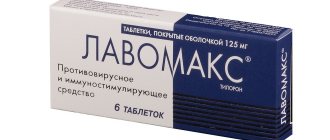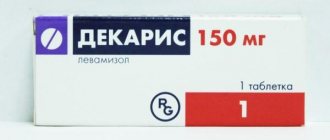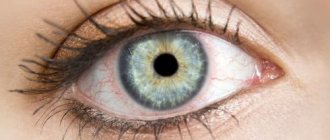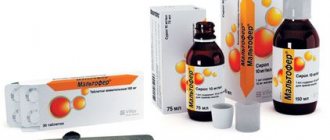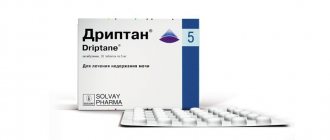Bivalos
The results of clinical studies indicate that treatment with the drug is accompanied by an increase in the annual incidence of venous thromboembolism, including pulmonary embolism. The cause of this phenomenon has not yet been established. When treating patients at risk for venous thromboembolism or patients with a possible increased risk, special attention should be paid to the specific signs and symptoms of venous thromboembolism, as well as adequate prevention of this complication.
Bivalos (strontium) affects the results of colorimetric methods for assessing Ca2+ concentration in blood and urine. For a more accurate assessment, it is necessary to use methods such as inductively coupled plasma atomic emission spectrometry or atomic absorption spectrometry.
The drug contains phenylalanine, which must be taken into account in patients with phenylketonuria.
Intended only for the treatment of postmenopausal women.
There are no clinical data on the effects of Bivalos during pregnancy. In animal experiments, administration of the drug in high doses during pregnancy led to the development of reversible bone deformities in the offspring. If this drug was mistakenly prescribed during pregnancy, treatment should be stopped immediately.
Strontium (the active ingredient of the drug) is excreted in breast milk, so it should not be prescribed during breastfeeding.
When using the drug, cases of severe hypersensitivity syndrome, including drug rash with eosinophilia and systemic symptoms (DRESS syndrome; Drug Rash with Eosinophilia and Systemic Symptoms), sometimes fatal, have been reported. DRESS syndrome is characterized by the development of rash, fever, eosinophilia and systemic manifestations (including adenopathy, hepatitis, interstitial nephropathy, interstitial lung disease). The time of occurrence was approximately 3-6 weeks from the start of therapy and in most cases there was a favorable outcome after cessation of therapy and initiation of treatment with corticosteroids. Patients should be warned about the need to immediately stop treatment if a rash appears and inform the attending physician. Patients who discontinue drug therapy due to hypersensitivity reactions should not resume treatment.
Description of the drug
The medicine Bivalos is the trade name of the drug. And the internationally accepted name is strontium ranelate.
The product is available in powder form. This form is intended for subsequent dilution with water. The resulting suspension is a drug ready for oral administration.
The medicine is packaged in small, two-gram sachets: sachets. Each sachet contains 2 g of active anhydrous strontium ranelate. In reaction with water, this will become strontium ranelate hydrate, and accordingly the mass will increase slightly: 2.63 g.
Included in the composition of the drug are excipients. In one sachet, in addition to the active form of strontium:
- 20 mg aspartame (sweetener);
- 0.4 g maltodextrin (starch) – filler;
- About 1 g of the diuretic mannitol.
Appearance: powder. The color is white, may have a pale yellow tint. The drug dissolved in water forms a suspended suspension. It is white and opaque. Maintains a suspended structure for a long time after shaking.
Pharmacotherapeutic group: Bivalos is not classified as a member of any chemical group in the medical classification. It is interpreted as a cure for osteoporosis.
Application and dosage
Once a day, standard dose: one sachet (2 g).
For better distribution, it is recommended to lie down after taking. Therefore, it is more convenient to use Bivalos at night, drinking the suspension before bed.
It is easy to prepare the medicine:
- Open the sachet and pour the powder from the bag onto the bottom of the glass;
- Pour in water: from a third of a glass to a glass - as desired;
- Stir well to form a suspension.
It is better to take immediately, but the uniformity of distribution lasts for a day without changing the medicinal properties. If necessary, you can prepare a medicinal solution in advance. Stir before use: in fact there is no such need, but on a subconscious level it helps psychologically. The patient needs confidence: the drug is of high quality, it will help.
Taking Bivalos should be taken with food. The interval is two, preferably three hours. Another reason for taking medication before bed. Food, especially containing calcium, interferes with the absorption and assimilation of the drug. This effect is especially pronounced in dairy products.
But even with this effect, calcium is necessary, and if the diet is depleted in it, preparations containing the mineral are prescribed. Vitamin D is also needed; not every food contains it; it is formed in light. And a sick person of respectable age does not always spend much time in the sun.
Pharmacological properties of the drug Bivalos
Strontium ranelate (5-[bis(carboxymethyl) amino] 2-carboxy-4-cyano-3-thiophenacetic acid, distrontium salt) has a dual mechanism of action and is indicated for the treatment of postmenopausal osteoporosis to reduce the risk of vertebral and femoral fractures. In vitro studies have found that strontium ranelate increases bone formation in bone tissue culture, as well as the proliferation of osteoblast precursors and collagen synthesis in bone cell culture; reduces bone resorption by reducing the differentiation of osteoclasts and reducing their resorptive activity. The dual mechanism of action leads to a rebalancing of metabolic processes in bone tissue in favor of osteogenesis. In experimental studies, strontium ranelate increased trabecular bone mass, trabecular number, and trabecular thickness. This led to increased bone strength. Clinical and experimental studies have demonstrated that strontium in bone tissue is mainly adsorbed on the surface of apatite crystals and only in small amounts replaces calcium in apatite crystals in newly formed bone tissue. Strontium ranelate does not alter the characteristics of bone crystals. In a study of iliac crest bone biopsies obtained up to 60 months after initiation of strontium ranelate therapy at a dose of 2 g/day, no adverse effects on bone quality or mineralization were noted. The average bone mineral density (BMD) during treatment with strontium ranelate increases compared to the baseline level by approximately 4% per year in the lumbar spine and by 2% per year in the femoral neck, reaching after 3 years (according to various studies) increases on average by 13–15% and 5–6%, respectively. When using strontium ranelate compared with placebo, starting from the 3rd month of treatment and throughout 3 years of therapy, an increase in the level of biochemical markers of bone formation (bone-specific ALP and C-terminal propeptide of procollagen type I) and a decrease in the level of biochemical markers of resorption are noted bone (serum C-telopeptide and cross-linked N-telopeptide in urine). In addition, a slight decrease in the concentration of calcium and parathyroid hormone (PTH) in the blood serum, an increase in the concentration of phosphorus in the blood and the total activity of alkaline phosphatase without any clinical manifestations were noted. Strontium ranelate consists of two stable strontium atoms and a ranelic acid molecule. The organic part of the compound provides better characteristics of the molecular weight, pharmacokinetics and tolerability of the drug. Due to the high polarity of the compound, a low degree of absorption, tissue distribution and binding of ranelic acid to blood plasma proteins is noted. Ranelic acid does not accumulate in the body; there is also no data indicating its metabolic transformations in the body of animals and humans. After absorption, ranelic acid is quickly excreted unchanged in the urine. The absolute bioavailability of strontium after oral administration of 2 g of strontium ranelate is approximately 25% (range 19–27%). The maximum concentration in blood plasma is achieved 3–5 hours after a single dose of 2 g. Equilibrium concentration is achieved 2 weeks after the start of treatment. Simultaneous administration of strontium ranelate with food or calcium salts reduces the bioavailability of strontium by approximately 60–70% compared to taking the drug 3 hours after a meal. Due to the relatively slow absorption of strontium, it is necessary to avoid food and calcium supplements both before and after taking strontium ranelate. Oral vitamin D supplements do not affect strontium concentrations. The volume of distribution of strontium is about 1 l/kg. The binding of strontium to human plasma proteins is low (25%), strontium has a high affinity for bone tissue. When determining the concentration of strontium in biopsy samples of the iliac crest of patients who were treated with strontium ranelate at a dose of 2 g/day up to 60 months inclusive, it was found that the value of strontium concentration in bone tissue can reach a plateau 3 years after the start of treatment. There are no data on the kinetics of strontium excretion from bone tissue after the end of therapy. As a divalent cation, strontium is not metabolized in the body. Strontium ranelate does not inhibit enzymes of the cytochrome P450 system. Strontium excretion depends on dose and time. The effective half-life of strontium is about 60 hours. Strontium is eliminated from the body in urine and feces. Its clearance from blood plasma is about 12 ml/min (coefficient of variation is 22%), and renal clearance is about 7 ml/min (coefficient of variation is 28%). Population pharmacokinetic data indicate that there is no relationship between age and the rate of strontium excretion in the target group of patients. Data on pharmacokinetics in patients with impaired liver function are not available, however, given the pharmacokinetic properties of strontium, no characteristic effect can be expected. The research program for the drug's effectiveness in preventing bone fractures consisted of two placebo-controlled studies: the SOTI study and the TROPOS study. The SOTI study included 1649 postmenopausal women with an established diagnosis of osteoporosis (with low BMD of the lumbar spine and a history of fractures in more than half of the women); the average age of the study participants was 70 years. The TROPOS study included 5091 postmenopausal women with an established diagnosis of osteoporosis (low BMD at the femoral neck and a history of fractures in more than half of the women); the average age of the study participants was 77 years. Both studies included 1556 patients aged over 80 years at the time of enrollment (accounting for 23.1% of the entire study population). In addition to strontium ranelate 2 g/day or placebo, patients took calcium and vitamin D supplements throughout the study period. Bivalos reduced the relative risk of developing new vertebral fractures over 3 years by 41% (SOTI study, Table 1 ). The effect was statistically significant starting from the 1st year of the study. Similar benefits were demonstrated in women with multiple fractures before the start of the study. The relative risk of symptomatic vertebral fractures (defined as fractures accompanied by back pain and/or a decrease in height of at least 1 cm) decreased by 38%. The use of Bivalos compared to placebo was also accompanied by a decrease in the number of cases of height loss of at least 1 cm. The results of studying the quality of life using an assessment using a special QUALIOST scale, as well as a scoring scale of general well-being based on the general scale of the SF-36 questionnaire, demonstrated the advantages of the drug compared with placebo. The effectiveness of the drug in reducing the risk of developing new cases of vertebral fractures was confirmed in the TROPOS study, including in patients with osteoporosis who did not have fractures before treatment. Table 1 Number of patients with vertebral fractures and a decrease in the relative risk of their development
SOTI Study | Placebo | Bivalos | Relative risk reduction compared with placebo (95% confidence interval), p value |
n=723 | n=719 | ||
| New vertebral fracture during 3 years of treatment | 32,8% | 20,9% | 41% (27–52), p≤0.001 |
| New vertebral fracture during the 1st year of treatment | 11,8% | 6,1% | 49% (26–64), p≤0.001 |
| New vertebral fracture with clinical symptoms during 3 years of treatment | 17,4% | 11,3% | 38% (17–53), p≤0.001 |
| TROPOS Study | n=1823 | n=1817 | |
| New vertebral fracture during 3 years of treatment | 20,0% | 12,5% | 39% (27–49), p≤0.001 |
Analysis of pooled data from the SOTI and TROPOS studies showed that in patients (over 80 years of age at study entry), Bivalos reduced the relative risk of developing new vertebral fractures by 32% over the 3-year study period (fracture rate with placebo was 26.5%). , and when taking strontium ranelate - 19.1%). Among patients without a history of fractures, but with at least one additional risk factor for fractures (n = 176), in whom pre-treatment BMD values of the lumbar spine and/or femoral neck were in the range characteristic of osteopenia, use of the drug Bivalos for 3 years of treatment reduced the risk of developing a first vertebral fracture by 72% (the incidence of vertebral fracture with strontium ranelate was 3.6%, and with placebo - 12.0%). Following the TROPOS study, data were analyzed in the subgroup of patients over 74 years of age at high risk of fracture—femoral neck BMD T-score ≤ –3 SD (the range used in the study was –2.4 SD according to NHANES III). In this group (n=1977, i.e. 40% of patients who took part in the TROPOS study), Bivalos reduced the risk of hip fractures by 36% over 3 years of treatment compared with placebo (Table 2). Table 2 Proportion of patients with femoral fractures and reduced relative risk among patients with BMD ≤–2.4 SD (NHANES III) aged ≥74 years
TROPOS Study | Placebo | Bivalos | Relative risk reduction compared with placebo (95% confidence interval), p value |
n=995 | n=982 | ||
| Fracture of the femur during 3 years of treatment | 6,4% | 4,3% | 36% (0–59), p=0.046 |
Overdose
Bivalos is one of the rare substances, an overdose of which is not dangerous. If the dose is exceeded, there are no painful symptoms.
If there is an accidental significant increase in the dosage, you can neutralize the drug with dairy products to be on the safe side. This will greatly reduce the absorption of strontium.
If the psychological effect (fear) is pronounced, the patient can provoke vomiting after taking the adsorbent to calm him down. This will remove the bead that has not had time to be absorbed.
Side effects
All cases recorded during drug trials are taken into account. Not all theoretically can be caused by the influence of bivalos, but all are noted that did not occur individually. Some are common. Adverse reactions:
- Diarrhea;
- Nausea;
- Thromboembolism of venous vessels;
- Myocardial infarction - this reaction is noted as frequent;
- Amnesia;
- Unconscious state;
- Headache;
- Unshaped chair;
- Convulsions, including generalized ones;
- Severe allergic reactions;
- Eczema;
- Toxic epidermal necrolysis;
- Dermatitis;
- Deviation from the norm in laboratory test values;
- Vertigo;
- Vomit;
- Paresthesia;
- Diseases of the oral mucosa (stomatitis, etc.);
- Stomach ache;
- Dizziness;
- Flatulence;
- Alopecia;
- Dry mouth;
- Constipation;
- Muscle spasm;
- Gastroesophageal reflux;
- Hives;
- Myalgia;
- Skin itching;
- Arthralgia;
- Insomnia;
- Angioedema;
- Bone pain;
- Rash;
- Confusion;
- Pain in the limbs;
- Hepatitis;
- Swelling of the extremities;
- Increased bronchial reactivity;
- Asthmatic syndrome;
- Bone marrow failure;
- Enlarged lymph nodes.
Interactions of the drug Bivalos
Taking medications containing calcium may reduce the bioavailability of strontium ranelate by approximately 60–70%. Therefore, an interval of at least 2 hours must be maintained between taking Bivalos and the above-mentioned medications. The use of aluminum and magnesium hydroxide simultaneously or less than 2 hours before taking strontium ranelate leads to a slight decrease in the absorption of strontium ranelate (20–25% reduction in AUC). The use of antacids 2 hours after taking strontium ranelate has virtually no effect on the absorption of strontium ranelate, therefore antacids containing aluminum and magnesium hydroxide are recommended to be taken at least 2 hours after taking Bivalos. However, if it is not possible to adhere to taking antacid medications at least 2 hours after taking Bivalos due to the recommended use of Bivalos before bedtime, then simultaneous use of Bivalos and antacid medications is allowed. Divalent cations of strontium ranelate can form complexes in the gastrointestinal tract with oral tetracycline and oral quinolone antibacterial drugs and reduce their absorption. Concomitant use of strontium ranelate with these medications is not recommended. During the use of tetracyclines or quinolones for oral use, treatment with Bivalos should be temporarily discontinued. No interactions have been observed with oral vitamin D preparations. Clinical studies have not revealed any interaction or increase in the level of strontium in the blood when used with drugs commonly used in this group of patients simultaneously with the drug Bivalos. These drugs include: NSAIDs (including acetylsalicylic acid), anilides (for example paracetamol), H2 receptor antagonists and proton pump inhibitors, diuretics, digoxin and cardiac glycosides, organic nitrates, calcium channel blockers, β-adrenergic blockers, ACE inhibitors, antagonists angiotensin II, selective β2-adrenergic receptor agonists, oral anticoagulants, antiplatelet agents, statins, fibrates and benzodiazepine derivatives.
Use of the drug Bivalos
For oral use. The recommended daily dose is 2 g of strontium ranelate (contents of 1 single-dose package) per day; before use, the contents of the package are dissolved in a glass of water. Bivalos should be taken between meals. It is recommended to take Bivalos before bed, preferably no earlier than 2 hours after eating. The contents of one sachet should be poured into a glass, add water and stir the granules in the water until a suspension is formed (uniform distribution of the granules in the water). The suspension must be drunk immediately after preparation. The shelf life of the prepared suspension is 24 hours. If the suspension cannot be drunk immediately after preparation, it should be stirred before taking. Bivalos is intended for long-term use.
Drug interactions
Calcium-containing medications, foods, and nutritional supplements block the entry of strontium ranelate into the body and interfere with the functioning of the medication. There is no need to refuse them. But an interval is necessary between taking them and taking Bivalos. Two hours is enough, more is possible: whatever time is convenient before bedtime.
Preparations of magnesium or aluminum oxide somewhat reduce the therapeutic effect of strontium ranelate. If they are taken at the same time or before Bivalos (even with a two-hour interval). The same medications (antacids), taken after Bivalos at intervals of 2 hours, no longer affect its absorption. Considering the recommendations for taking strontium before bedtime, antacid medications are allowed to be combined with it over time.
Tetracyclines and quinolones are poorly absorbed in the presence of strontium. For the period of need for their use, stop taking Bivalos.
The drug strontium ranelate has a lot of positive properties. Why is Bivalos, which improves health and even saves lives, banned in Europe? This is the next section. From it it is clear what dangers from taking the drug forced Europeans to remove it from the list of drugs.
The mechanism of action of the drug for osteoarthritis
Osteoratrosis can affect any component of the skeletal system. The spine, joints, bones - everything that contains bone and cartilage tissue. Knee pain is rarely understood by patients as a manifestation of osteoarthritis. But this happens often. With correct, timely diagnosis, the appointment of Bivalos 2 (the number is an indicator of the content of strontium ranelate in one dose - sachet), as evidenced by the instructions for use, quickly stops the disease. The cartilage stops deteriorating, the medicine stimulates its restoration. The regeneration process starts and degradation is inhibited.
